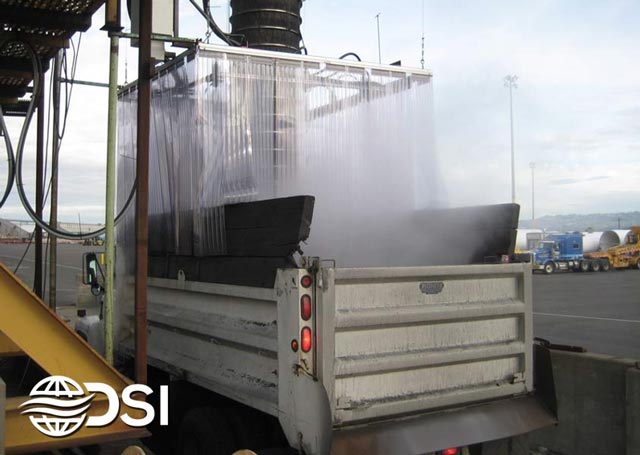These dust control and dust suppression systems are used to control, prevent, and reduce fugitive dust released during the industrial processing and handling of dry bulk solids. They are used in many different types of industries including grain processing, construction and demolition, packaging, cement, aggregate, sand, shipping, rail / freight, trucking, and more. Dust suppression creates a much cleaner working environment, reduces wear and tear on equipment, prevents contamination, and provides cleaner air.
Industrial dust control and suppression equipment can use a variety of methods and principles to achieve varying degrees of effectiveness. We highly recommend the Dry Fog™ dust suppression system because it only wets the dust and does not wet the material used in the process. It also uses much less water compared to traditional dust sprayer systems, and with no moving parts, maintenance is all but eliminated.
Most customers self-install their Dry Fog™ dust suppression system, however turnkey installations are offered on a case-by-case basis.
Category | Dust Control |
Learn more about industrial dust suppression systems and dust control methods for use during the processing and handling of dry bulk solids at indoor facilities or outdoor plants.

Dust suppression and curtain systems used during loading of trucks with dry powder to be transported to a landfill for disposal
What is industrial dust suppression and what are some dust suppression methods?
Dust suppression systems are used to prevent, control, and greatly reduce the amount of fugitive dust particles (usually smaller than 10 microns) released during the processing and handling of dry bulk solids. This is generally done by wetting or spraying the ultra-fine dust particles with water, or by mixing water with a dust control chemical like magnesium chloride. The spray clings to the dust particles and causes them to drop or fall out of the air.
This is different from dust collection methods that use vacuums, baghouses, fabric filters, wet scrubbers, electrostatic precipitators, water curtains, and dust collectors.
Read the full article


